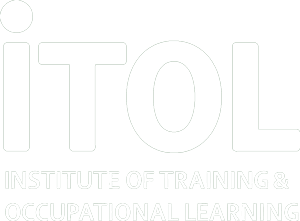Becoming a successful training manager starts with a foundation of good communication skills. But there’s more to it than that. To run a training department effectively, a good training manager must focus on six core competencies.
- Devising Strategic and Operational Training Plans.
A good training manager needs to have a strategic plan in place to meet the organization’s training needs over the next few years. This “top-down” visionary document sets the direction of the training department as it directly relates to the achievement of your organization’s objectives. It answers the question, “how will the training department help the organization reach its goals and objectives?”
You must also create an operational training plan. This is a “bottom-up” approach for addressing your organization’s current job performance needs based on your training needs analysis data and feedback gathered from past learners.
- Conducting a Training Needs Analysis.
When someone in your organisation makes a training request, what’s the best way to tell whether the training is actually warranted? You can only truly answer this question if you have conducted a thorough Training Needs Analysis (TNA).
A TNA is more structured than just asking the organisation and employees what training they need or want. It’s a step-by-step process that empowers you to dig deeper into real training needs. With a TNA, you can find the underlying cause of a performance problem within your organisation, and then determine the right solution for that problem.
Without a training needs analysis, your training department could end up in order-taking mode, where you provide training just because somebody asked for it. This approach is more likely to cost your organisation money without delivering any actual return-on-investment.
- Overseeing Course Design and Development.
An effective training manager needs to have a solid understanding of the design and development process to align training courses with the business goals of the organisation. The process typically involves outlining the content, drafting instructional objectives, creating examples and exercises, organising the course into units or modules, and all the other steps that go into developing a training course.
- Managing Course Delivery and Implementation.
Launching a training programme requires the careful coordination of multiple details. Whether your training courses will be delivered in-house or through an external provider, all the various components need to work in sync. In addition to planning the course schedule, you are also responsible for coordinating other necessary resources including technology, facilities, or additional personnel.
- Managing the Evaluation Process.
Every significant training programme should be evaluated for effectiveness. You should be able to follow a specific process that not only looks at the content of the course but what was learned? Did it change workplace behaviour? Has it improved results? And lastly was it good value for money?
If stakeholder expectations aren’t being met, the evaluation process affords you the opportunity to identify where corrections are needed. This also gives you a path forward to focus on the areas that need improvement, revise the training programme as needed, and bring it up to expectations. Or possibly retire it!
- Staffing a Training Team.
As you add trainers to your team, it’s important to be clear on what you’re looking for. Do you want somebody who facilitates training? Do you want somebody who designs training? Or do you want somebody who can do both? Have a list of competencies in mind before you start your search to ensure the staffing process goes as smoothly and efficiently as possible.
Also, recognise that you may not be able to find someone with every competency you’re looking for. You may need to compromise and negotiate. Having that flexibility, coupled with a clear set of expectations, will enable you to quickly build a well-rounded training team.
These six core competencies are crucial to being a successful training manager. But they are only half the story. At the same time, it’s important to take a look at the bigger picture and run your training department like a business.
To dive deeper into this check out our next article about the need for business acumen.

